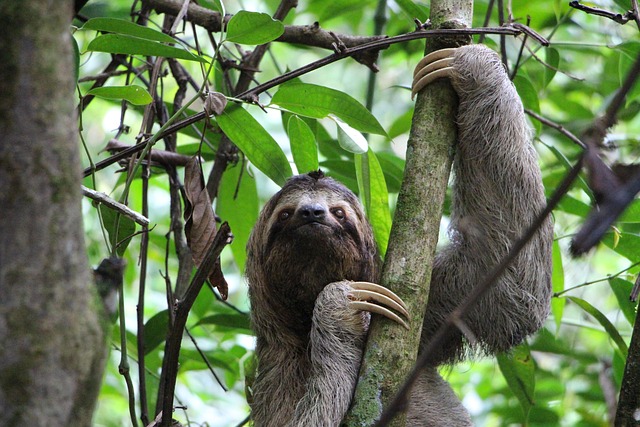Often mocked for their leisurely pace and penchant for napping, sloths’ very sluggishness may be the key to their evolutionary success, according to a new study.
Research into the 30-million-year history of these enigmatic mammals, including their long-extinct colossal relatives, suggests that being small and slow in the trees allowed modern sloths to outmaneuver the greatest predator of all: early human hunters.
The study, led by Dr. Alberto Boscaini of the University of Buenos Aires and published in the journal Science, offers a stark reminder of the urgent need for conservation efforts for Earth’s remaining sloth species.
“Some sloths are here with us today, some of them are at risk of extinction and one take home message is that we need to act now to avoid a total extinction of the group,” said Dr. Boscaini.
Today’s sloths are familiar as small, tree-dwelling creatures with endearing faces, exclusive to the rainforests of South and Central America.
However, the ancient Americas were once home to an astonishing diversity of sloths, adapting to every imaginable environment. These formidable creatures ranged from elephant-sized terrestrial giants to subterranean dwellers and even aquatic forms, many towering over a human.
Around 15,000 years ago, a dramatic decline in sloth populations began, a mystery that has long puzzled scientists, with theories ranging from climate change to human hunting, or a combination of both.
By meticulously analyzing the body size of sloths across their vast evolutionary family tree and integrating this with genetic data, the researchers found that sloths repeatedly adjusted their body size to cope with climatic shifts, with no lasting detrimental effects.
Crucially, their research points to an “abrupt and precipitous decline” that directly coincided with the widespread expansion of humans across the Americas, who actively hunted large mammals for sustenance.
The study’s findings suggest that the enormous, ground-dwelling sloths, despite their imposing size, became relatively easy prey.
These are the species that began to vanish first. In stark contrast, the smaller, arboreal sloths, camouflaged and difficult to reach within the dense forest canopy, largely escaped notice, ensuring their survival to the present day.
“Living sloths are extremely slow and that’s because they have a very low metabolic rate. This is their strategy to survive,” explained Dr. Boscaini, highlighting the adaptive advantage of their seemingly unassuming lifestyle.
Co-researcher Dr. Daniel Casali of The University of São Paulo, Brazil, outlined the irreversible loss of the ancient sloth diversity.
“We can conserve the ones that are alive but unfortunately we lost something that is not possible to replace.”
The study not only sheds light on the surprising evolutionary resilience of sloths but also serves as a critical call to action to protect their surviving relatives, ensuring these unique and successful creatures continue their slow, steady journey through time.

